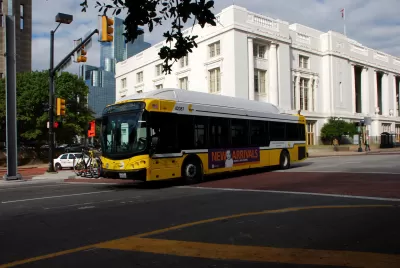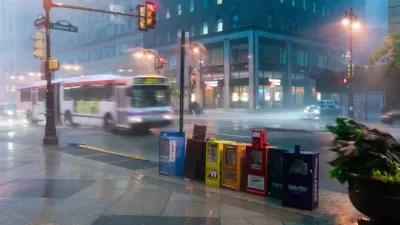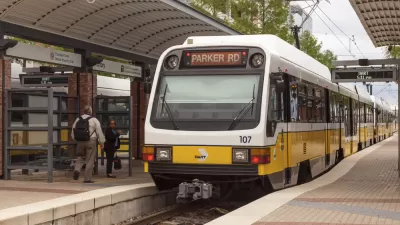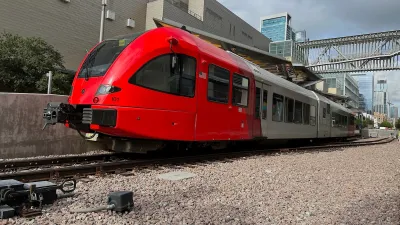The Dallas City Council recently approved a long-awaited and much-delayed bus system redesign for DART. Riders should require fewer transfers and shorter wait times starting in January 2022.

"The long-promised and even longer-overdue overhaul of [the the Dallas Area Rapid Transit] bus system — neglected for decades while the transit agency focused on flashy rail projects — will finally roll out in January," according to a column by Sharon Grigsby.
According to Grigsby's assessment, the DARTzoom bus system redesign approved by the Dallas City Council at the end of August won't fix everything, but it's a decent start toward making the system faster and easier to navigate.
DART is selling DARTzoom as a benefit to riders—who should require fewer transfers and shorter wait times to get around the city on buses. Grigsby calls attention to three key changes designed to achieve those goals:
- On-demand GoLink service "will be increased substantially — to a total of 30 zones — and become an even more essential part of the system."
- All local routes "will run seven days a week from, at minimum, 5 a.m. to midnight, with some in service even longer."
- "In some cases, bus routes are farther apart from one another, especially those that were bunched together."
Rob Smith, interim vice president for service planning, is quoted in the article describing the new bus system as a hybrid of a high-frequency grid and a hub-and-spoke layout.
"The new plan calls for DART to designate 22 bus routes and its four light rail lines as a 'core frequent network' in which the goal will be a maximum 15-minute wait at rush hour, 20 minutes midday and occasionally 30 minutes in late evening," explains Grigsby.
Grigsby provides more on the current state of the system and the political changes that spurred the system redesign across the finish line—after elected and political leaders pushed DART to balance the core city's best interests with a commitment to regional planning.
For more, see the existing system map, and the new DARTzoom map.
FULL STORY: In booming region, will DART overhaul give Dallas a bus system that connects people with jobs?

Study: Maui’s Plan to Convert Vacation Rentals to Long-Term Housing Could Cause Nearly $1 Billion Economic Loss
The plan would reduce visitor accommodation by 25,% resulting in 1,900 jobs lost.

North Texas Transit Leaders Tout Benefits of TOD for Growing Region
At a summit focused on transit-oriented development, policymakers discussed how North Texas’ expanded light rail system can serve as a tool for economic growth.

Why Should We Subsidize Public Transportation?
Many public transit agencies face financial stress due to rising costs, declining fare revenue, and declining subsidies. Transit advocates must provide a strong business case for increasing public transit funding.

How Community Science Connects People, Parks, and Biodiversity
Community science engages people of all backgrounds in documenting local biodiversity, strengthening connections to nature, and contributing to global efforts like the City Nature Challenge to build a more inclusive and resilient future.

Alabama: Trump Terminates Settlements for Black Communities Harmed By Raw Sewage
Trump deemed the landmark civil rights agreement “illegal DEI and environmental justice policy.”

Dear Tesla Driver: “It’s not You, It’s Him.”
Amidst a booming bumper sticker industry, one writer offers solace to those asking, “Does this car make me look fascist?”
Urban Design for Planners 1: Software Tools
This six-course series explores essential urban design concepts using open source software and equips planners with the tools they need to participate fully in the urban design process.
Planning for Universal Design
Learn the tools for implementing Universal Design in planning regulations.
City of Santa Clarita
Ascent Environmental
Institute for Housing and Urban Development Studies (IHS)
City of Grandview
Harvard GSD Executive Education
Toledo-Lucas County Plan Commissions
Salt Lake City
NYU Wagner Graduate School of Public Service





























